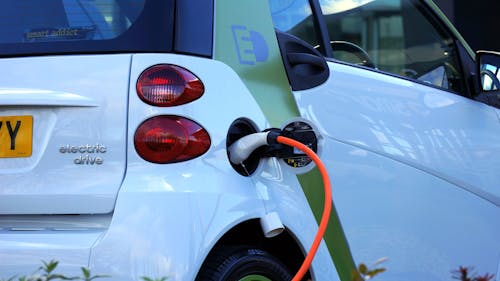
Introduction
Electric vehicles (EVs) have emerged as a transformative force in the automotive industry, promising a cleaner and more sustainable future. As the world grapples with climate change and seeks to reduce greenhouse gas emissions, EVs have gained significant traction for their potential to revolutionize transportation. This article explores the evolution, technological advancements, environmental impact, market trends, challenges, and future prospects of electric vehicles.
The Evolution of Electric Vehicles
Electric vehicles have a rich history dating back to the early 19th century. While early models faced challenges such as limited range and battery capacity, recent decades have seen remarkable advancements in technology and infrastructure.
1. Early Innovations and Challenges
In the 1830s, Robert Anderson invented the first crude electric carriage in Scotland, laying the foundation for future electric mobility. Throughout the 20th century, various EV models were developed, but widespread adoption was hindered by technological limitations and the dominance of internal combustion engines (ICEs).
2. Modern Resurgence
The late 20th and early 21st centuries marked a resurgence in electric vehicle development, driven by concerns over air pollution, energy security, and climate change. Innovations in battery technology, particularly with the advent of lithium-ion batteries, significantly improved EV performance, range, and affordability.
Types of Electric Vehicles
Today, electric vehicles encompass various types tailored to different consumer needs and technological advancements.
1. Battery Electric Vehicles (BEVs)
BEVs operate solely on electricity stored in rechargeable batteries. They produce zero tailpipe emissions and are considered the cleanest option among EVs. Popular models include the Tesla Model S, Nissan Leaf, and BMW i3.
2. Plug-in Hybrid Electric Vehicles (PHEVs)
PHEVs combine an electric motor with a gasoline engine, offering flexibility with electric-only driving while providing extended range through hybrid operation. Examples include the Chevrolet Volt and Toyota Prius Prime.
3. Fuel Cell Electric Vehicles (FCEVs)
FCEVs use hydrogen fuel cells to generate electricity, emitting only water vapor as exhaust. Vehicles like the Toyota Mirai and Hyundai Nexo represent advancements in hydrogen-powered transportation.
Environmental Impact and Sustainability
One of the primary drivers behind the adoption of electric vehicles is their environmental benefits compared to traditional ICE vehicles.
1. Reduction in Greenhouse Gas Emissions
EVs produce zero tailpipe emissions, significantly reducing greenhouse gases and pollutants that contribute to climate change and urban air quality issues. When coupled with renewable energy sources, such as solar or wind power, the lifecycle emissions of EVs can be close to zero.
2. Energy Efficiency
Electric motors are inherently more efficient than internal combustion engines, converting a higher percentage of energy from the battery to power the vehicle. This efficiency contributes to lower energy consumption and reduced reliance on fossil fuels.
3. Sustainable Manufacturing and Materials
Efforts are underway to ensure that EV production processes prioritize sustainability. This includes responsibly sourcing materials for batteries, promoting recycling initiatives, and reducing the environmental footprint of manufacturing facilities.
Market Trends and Adoption Challenges
Despite their environmental benefits, widespread adoption of electric vehicles faces several challenges.
1. Infrastructure Development
The expansion of charging infrastructure is critical to supporting the growing number of EVs on the road. Public charging stations, workplace charging solutions, and advancements in fast-charging technology are essential to alleviate range anxiety and enhance convenience for EV owners.
2. Cost and Affordability
While the cost of EVs has decreased over the years, they still tend to have a higher upfront cost compared to ICE vehicles. However, lower operating and maintenance costs, as well as government incentives and subsidies, can make EV ownership more economical over the vehicle’s lifespan.
3. Consumer Awareness and Perception
Educating consumers about the benefits of EVs, addressing concerns about range limitations, and dispelling myths about battery life and charging infrastructure are crucial for increasing consumer confidence and adoption rates.
Technological Advancements and Future Outlook
Ongoing research and development in EV technology promise continued advancements and innovations.
1. Battery Technology
Research is focused on improving battery energy density, reducing charging times, and enhancing battery lifespan. Innovations such as solid-state batteries and advancements in manufacturing processes aim to make EV batteries more efficient and affordable.
2. Autonomous Driving and Connectivity
Electric vehicles are at the forefront of autonomous driving technology, integrating sensors, AI, and connectivity to enhance safety and efficiency on the road. Features such as vehicle-to-grid (V2G) technology enable bidirectional energy flow between EVs and the electric grid, supporting grid stability and energy management.
3. Policy and Regulation
Government incentives, emission regulations, and investments in clean energy infrastructure play a pivotal role in shaping the future of electric vehicles. Policies that encourage EV adoption, such as zero-emission vehicle mandates and tax incentives, are critical for driving market growth and reducing environmental impact.

Conclusion
Electric vehicles are poised to play a pivotal role in transforming transportation into a cleaner, more sustainable system. With advancements in technology, supportive policies, and growing consumer acceptance, EVs are likely to dominate the automotive market in the coming decades. Embracing electric mobility not only reduces environmental impact but also promotes energy independence and enhances overall quality of life. As we electrify the future of transportation, the benefits of electric vehicles extend beyond individual drivers to benefit society as a whole, paving the way towards a greener and more sustainable future.
This comprehensive article covers the evolution, benefits, challenges, and future prospects of electric vehicles, providing a thorough exploration of their impact on the automotive industry and society.














